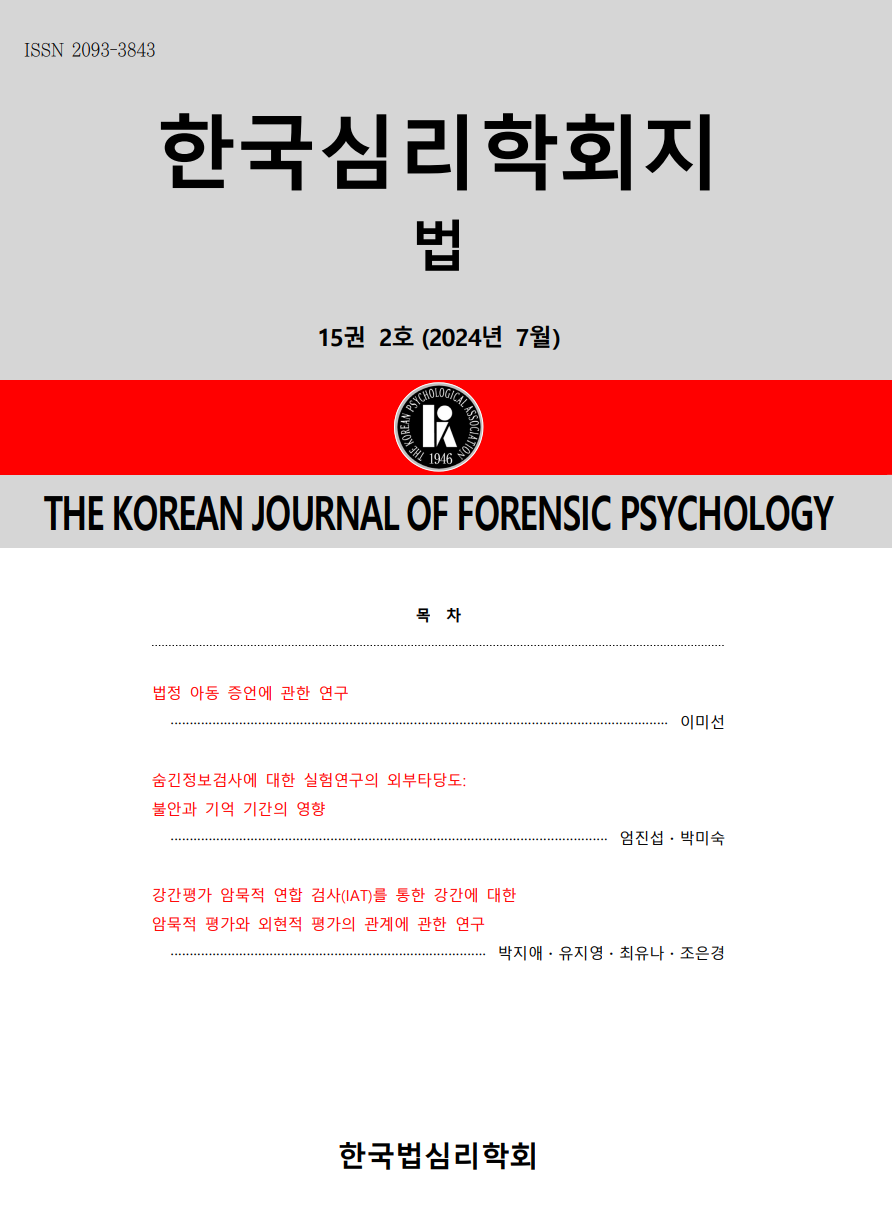open access
메뉴
open access
메뉴 ISSN : 2093-3843
ISSN : 2093-3843
The aim of the present study is to examine difference between juvenile offenders with and without previous criminal records, to identify risk factors which influence re-offending of juvenile offenders, and eventually to prevent juvenile offenders from committing crime. Based on the results from risk assessment tool for juvenile offenders, the present study investigated difference between juvenile offenders with and without previous criminal records. Case reports of a total of 201 juvenile offenders who had committed crime in the various areas of Seoul and Yongin were analyzed. As a result, considerable differences were found between two groups of juvenile offenders, in terms of family structure, family functioning, school life, elopement, criminal history, and personal factors. Finally, limitations of the present study were discussed and suggestions for future research were made.
The purpose of this study was to investigate brain studies of individuals with psychopathy. Previous studies using brain imaging were reviewed with pivotal research results in brain structure/function of psychopaths. Reduced volumes in prefrontal cortex, temporal lobe, and amygdala have been reported in psychopathy. Psychopaths showed abnormal brain function in prefrontal lobe, reduced amygdala activity in emotional processing, and increased striatum activity during reward processing. Functional and structural studies provide support for dysfunction in fronto-limbic circuits of psychopathy. Psychopathy has been reported as a disorder of the moral brain by a significant number of researchers. Abnormalities of fronto-limbic networks may be associated with impulsiveness, aggression, callous-unemotional traits, and problems of moral socialization. The limitations of the studies and directions for the future research were discussed.
The purpose of this study was to explore the effect of emotional recognition capabilities and intelligence on factors of psychopathic tendencies measured by Psychopathy Checklist (PCL-R). Total of 87 participants involved in this study were Korean inmates in prison. Variables of the effect on intelligence were measured with the Korean-Wechsler Adult Intelligence Scale-Ⅳ(K-WAIS-Ⅳ) and the recognition task of facial expressions was performed with Emotional Recognition Test-Revised(ERT-R), respectively. According to regression analysis using the SPSS, there were negative correlation between subscales of ERT-R and subscales of psychopathic tendencies, Interpersonal, Affective and subscales of K-WAIS-Ⅳ and subscales of psychopathic tendencies, Lifestyle and Antisocial. As a result. The limitations of the study and suggestions for further research are discussed.